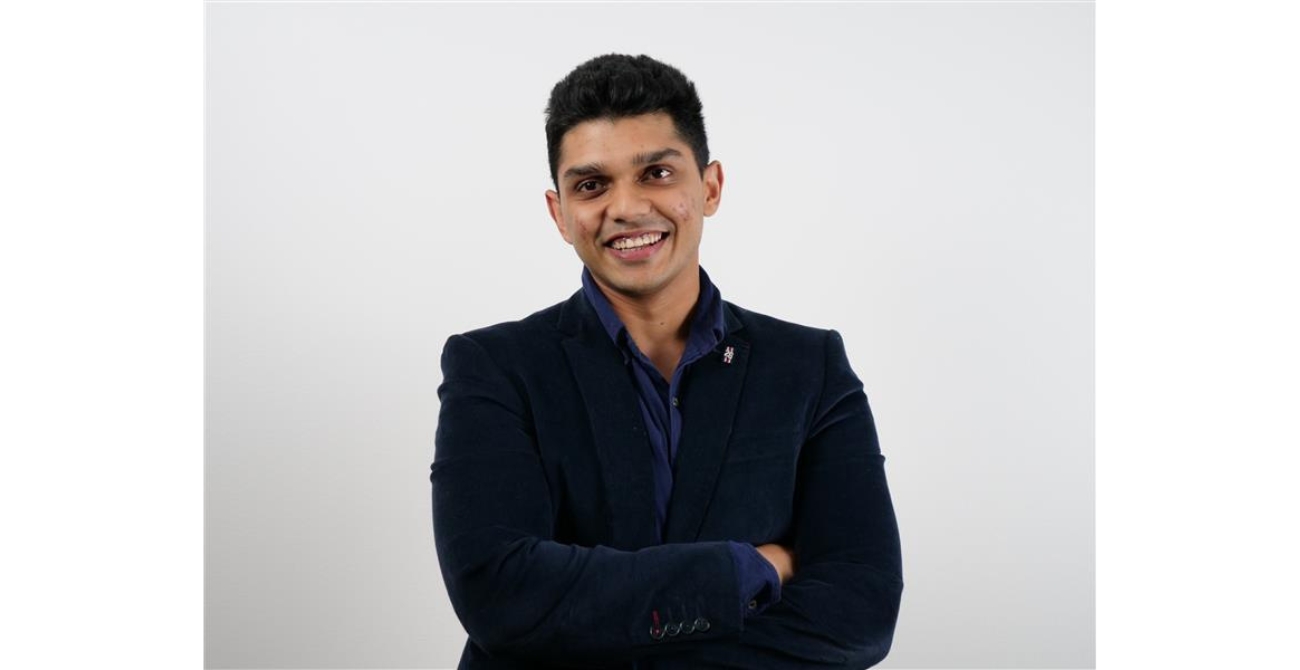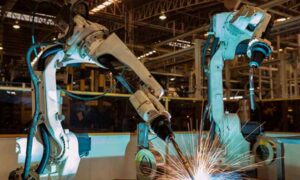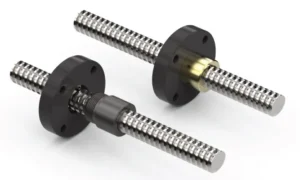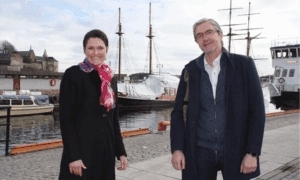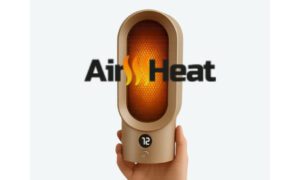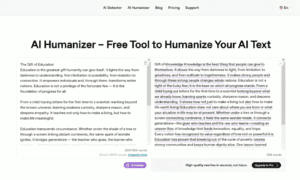In today’s rapidly evolving industrial landscape, where artificial intelligence and robotics are increasingly transforming how we live and work, a few innovators stand out for their ability to merge deep technical knowledge with real-world impact. Hanut Singh, Lead Applications Engineer at Chef Robotics, is one such figure. With a career shaped by engineering excellence, entrepreneurial thinking, and client-focused execution, Singh has become a notable force in AI-powered automation.
A Journey Fueled by Curiosity and Craft
Hanut Singh’s path began with a solid foundation in electrical engineering. He earned his Bachelor of Technology in Electrical and Communications Engineering from SRM IST Chennai before moving to the United States to pursue a Master’s in Electrical Engineering at the Rochester Institute of Technology (RIT). It was at RIT that Singh laid the groundwork for a career marked by both academic rigor and hands-on innovation.
During his graduate studies, Singh worked on projects like the Flair Bot, a robotic bartender capable of autonomously mixing cocktails using vision-based recognition. His work extended beyond the lab, reflecting a strong desire to integrate robotics into everyday life. In recognition of his academic excellence and technical promise, he was awarded the RIT Electrical Engineering Scholarship and obtained the FANUC CERT Level 1 certification.
Engineering with Real-World Impact
Singh’s career has been marked by consistent advancement through key roles in the robotics and automation industry. At SoftInWay Inc., he built his foundation in robotics engineering before moving to Digit7 Labs, where he led the development of AI-powered drone systems. There, he honed critical skills in AI model training and hardware integration, along with designing novel sensors.
He later joined Fetch Robotics, where his contributions to the deployment of Autonomous Mobile Robots (AMRs) helped streamline AI-based navigation and workflow automation in complex industrial settings.
Modex is one of the most influential trade shows in the logistics and warehouse automation industry, providing companies with a platform to present their latest technologies to a global audience of potential customers, partners, and investors. For Fetch Robotics, this particular Modex was especially important—it marked the company’s first major public appearance following its acquisition by Zebra Technologies. With a significant investment in its largest-ever booth, the goal was to showcase a fully integrated warehouse environment that combined Fetch’s autonomous mobile robots with Zebra’s smart automation solutions. The spotlight was on, and expectations were high.
Singh played a key role in ensuring the success of this critical demonstration. He took ownership of the project, coordinating across teams to align efforts and deliver a polished, real-time showcase that reflected the combined strengths of both companies. The live demo not only captured the attention of attendees but also reinforced the strategic value of the Fetch-Zebra partnership. Thanks to Singh’s leadership, the event became a catalyst for new customer interest and contributed meaningfully to the company’s momentum in the competitive warehouse automation market.
Throughout his career at Zebra Automation (formerly Fetch Robotics), Singh was at the forefront of several high-stakes customer deployments and played a key role in the development of core features that helped the company gain significant traction in the warehouse automation space. He worked directly with major clients, translating complex operational challenges into scalable robotic solutions that delivered real value. His contributions not only strengthened customer relationships but also enhanced the capabilities of the product, positioning Zebra as a leader in the automation industry.
This hands-on experience across both deployment and product development gave Singh a deep understanding of the operational and technical demands of industrial automation. His ability to bridge engineering with real-world applications quickly set him apart, propelling him first into a Senior Applications Engineer role and eventually into a leadership position. Singh’s time at Zebra laid the foundation for his expertise in robotics integration, customer success, and scalable automation—skills that continue to define his impact in the field.
However, it is at Chef Robotics where Singh’s influence has been most transformative. Chef Robotics—an AI-driven food automation company that has raised over $65 million in funding—has deployed robotic systems responsible for assembling over 44 million meals across North America. As Lead Applications Engineer, Singh has played a central role in managing and scaling these automation solutions, thus laying the groundwork for raising capital and helping Chef achieve this funding feat.
His responsibilities extend beyond engineering hardware. Singh’s strategic oversight of multi-party integration—spanning software, hardware, and field deployment teams—has enabled Chef Robotics to scale deployments rapidly and effectively. One of his most impactful achievements was reducing the coefficient of variation (CoV) in AI-driven ingredient placement from 11% to 4%, significantly improving precision and reducing material waste in food packaging.
Additionally, his work in AI-based volumetric tooling optimized weight distribution in food assembly lines, resulting in higher efficiency, lower operational costs, and improved consistency.
Combining Innovation with Business Strategy
What sets Singh apart is his rare ability to bridge the gap between engineering and economics. While many robotics engineers focus solely on technical development, Singh works closely with clients to align automation solutions with business objectives. His approach includes quantifying return on investment (ROI), validating large-scale deployments, and ensuring that automation translates into long-term value.
“Mr. Singh stands out as a rare talent who seamlessly integrates technical innovation with business execution,” noted a senior industry observer. “His ability to align AI-driven robotics with real-world business needs has justified large-scale automation investments, particularly in the food industry, where operational efficiencies translate to millions in cost savings.”
Singh himself believes that AI’s greatest impact will be on the physical world. His work enables businesses to reduce reliance on offshore labor, stabilize prices, and meet rising demand—all while increasing precision and reducing waste.
Published Work and Thought Leadership
Outside of his engineering roles, Singh has contributed to academic research. His paper “Stress Detection and Relief Using Wearable Physiological Sensors,” published in TELKOMNIKA, explores the intersection of biomedical engineering and real-time analytics. The project introduced a wearable device capable of detecting stress levels and initiating relief responses, demonstrating Singh’s versatility and multidisciplinary thinking.
Singh’s portfolio, showcased on platforms like Portfolium, highlights his creative problem-solving and technical range. His featured projects include:
- EMG-Controlled Arm Robot: Operated using surface EMG signals and muscle activity classification through machine learning.
- Flair Bot: A vision-guided robotic bartender capable of autonomous drink preparation.
- Delta Robot Chip Sorter: A high-speed sorting robot using color sensors and vacuum grippers.
- Anki Vector Navigation via ArUcO Marker: Enhancing consumer robot capabilities with advanced navigation.
Each project exemplifies his focus on usability, scalability, and system integration.
Service, Values, and Recognition
Singh’s technical career is grounded in values of service and mentorship. He has volunteered with HelpAge India for multiple years and mentored youth through the Hitaishi Happiness Centre, demonstrating his commitment to empowering others.
He has been recognized with multiple awards, including:
- RIT Electrical Engineering Scholarship
- FANUC CERT Level 1 Certification
- AMCAT Certified Business Analyst
These accolades reflect both his professional achievement and character.
A Vision for the Future
As AI and robotics increasingly define the future of industries like manufacturing, logistics, and food production, Hanut Singh is poised to lead. With a foundation in scalable, intelligent systems and a mindset rooted in purpose-driven engineering, Singh represents a new generation of professionals who see automation not just as a tool, but as a transformative force.
For Singh, robotics is not just about automation—it’s about helping people and industries achieve more with less. His emphasis on “focus, tenacity, and discipline” remains the cornerstone of his continued success.
In a world shaped by digital acceleration and intelligent machines, Hanut Singh stands out for his practical vision and measurable impact. His work at Chef Robotics, Fetch Robotics, and beyond shows that the real power of AI lies not in theory, but in execution. From labs to factories, from prototypes to scaled deployments, Singh is not just building robots—he is engineering the future of how we live, work, and produce. Singh aims to scale AI-driven robotics through smart business and products that solve problems and help the current labor force.

